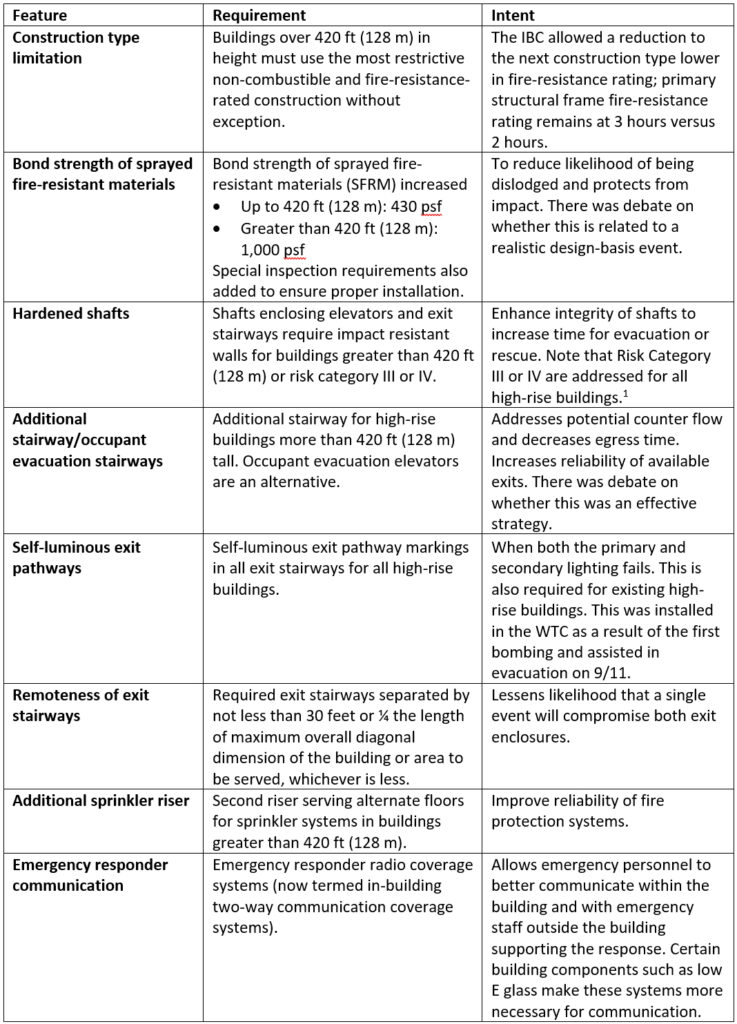
The International Building Code since 9/11 — What does the future hold?
![]() The first edition of the International Code Council’s International Building Code (IBC) — which establishes the minimum requirements to provide “a reasonable level of safety, health and general welfare” — was less than a year old when the terrorist attacks of Sept. 11, 2001, occurred. Twenty years and seven editions of the IBC later, the attacks remain not only the deadliest terrorist attack in history in the United States but also the deadliest single incident for emergency responders.
The first edition of the International Code Council’s International Building Code (IBC) — which establishes the minimum requirements to provide “a reasonable level of safety, health and general welfare” — was less than a year old when the terrorist attacks of Sept. 11, 2001, occurred. Twenty years and seven editions of the IBC later, the attacks remain not only the deadliest terrorist attack in history in the United States but also the deadliest single incident for emergency responders.
Many of the lessons learned from the collapse of the World Trade Center’s iconic twin towers and the adjacent 7 World Trade Center applied directly to building and fire safety and have since been reflected in subsequent editions of the IBC and other safety standards. The changes to the IBC — based upon lessons learned from that horrific event — were the result of careful scrutiny, passionate debate and, ultimately, professional consensus. Along the way, building safety and fire protection professionals wrestled with complex and wide-ranging questions, including the very nature of what building regulations and codes are intended — and expected — to accomplish.
Note that this article will use the term “high-rise building” which is a North American term. In the IBC, it is defined as follows:
HIGH-RISE BUILDING. A building with an occupied floor located more than 75 feet (23 meters) above the lowest level of fire department vehicle access.
Finding a balance of risk and safety
Perhaps inevitably, analyses and critiques of the catastrophic events of that day raised many questions about the then-current building and fire safety codes and standards and whether the buildings involved were as safe as they could have been. Keep in mind, these towers were built in the 1960s and had survived an earlier terrorist attack on Feb. 26, 1993. However, at the same time they also raised many, if not more, questions about what should be done to ensure that buildings could be made safer in the future. Typically, building codes had indirectly focused upon a single fire scenario within a building. After 9/11, this historic approach to building codes was questioned. Should building codes address terrorist events? What should the assumptions be? If these events are addressed should additional protection be limited to certain types and classifications of buildings, such as high-rises or iconic buildings? Is it even possible to reach consensus on what constitutes an “iconic” building? In theory, everyone agreed that risk and cost must be balanced, but early on, few could agree on where that balance point was located.
The IBC is a prescriptive code that grew out of legacy codes dating as far back as 1927 in the United States. These codes and the IBC have worked well in creating safe buildings, but it is hard to quantify to what level they perform and how unanticipated events will affect a building. The focus of building regulations has always been to provide a minimal level of safety and were not intended to anticipate every event that may occur in the future. Though these codes are intended to provide a minimum level of safety, there is likely some level of redundancy built into the requirements. Note that, whether the building regulations are prescriptive or performance, determining to what level a building is intended to perform when the events are hard to predict is difficult. This is a struggle familiar to fire protection and fire safety engineers when undertaking performance-based designs.
This article focuses on model building regulations, via the IBC and related codes, that can be applied to a wide range of buildings and occupancies and sets a minimum level of performance. Owners and related stakeholders can certainly design for more severe events. This happens frequently through requirements by insurance underwriters or government agencies understanding increased threats they may be subject to and the consequence of failures to life safety, operations and general property loss. Historically, model building regulations such as the IBC have focused on protecting against unintentional fires. Arson was not typically considered, to say nothing of airplanes deliberately crashing into buildings.
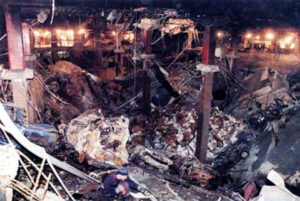
Means of egress provisions have always been key to the building code but the code does not, even today, mandate specifically how a building is to be evacuated. The tools are provided via elements such as number of exits, egress width, protected corridors and stairways, and appropriately zoned alarm systems (where applicable), but the evacuation plan for a building is dealt with individually for each building. Certain occupancies are required to have fire and evacuation plans and the building code contains specific tools such as use of a main exit for assembly occupancies and emergency voice/alarm communication systems for large assembly occupancies, schools and high-rise buildings. Some occupancy types have an intended or assumed type of evacuation or defend-in-place strategy in mind such as for hospitals, high-rise buildings and assembly occupancies. It should be noted that prior to 9/11, and even spanning to the first World Trade Center attack in 1993, means of egress within high-rise buildings focused on zoned evacuation — fire floor, two floors above and two floors below. As a result of 9/11, some of these long-assumed strategies, specifically zoned evacuation, were questioned. This led to discussions and concerns with how the fire service used the stairways to perform rescue and fire-fighting operations and interacted with evacuating occupants.
The issues being raised went far beyond what a building code was intended to do, and even farther beyond what it was supposed to achieve for safety. At the same time, an opportunity presented itself to ask what lessons could be learned from that event, despite being such an extreme outlier.
Prior to the completion of the World Trade Center investigation completion and report[i], the Code Council created an Ad-Hoc Committee on Terrorism Resistant Buildings (TRB) to begin to explore how the Code Council’s International Codes (collectively referred to as the I-Codes) could be revised based upon lessons learned from the events of 9/11. Later in 2004, the Code Council also formed the Code Technology Committee (CTC) to evaluate and incorporate new technologies and concepts into the I-Codes based upon topics assigned from the Code Council Board of Directors. The board tasked these two committees to join forces to focus upon the World Trade Center investigation.
Soon after the Code Council established its review committees, the National Institute of Standards and Technology (NIST) was in the process of investigating and ultimately publishing a final report of the collapse of the twin towers — “Final Report on the Collapse of the World Trade Center Towers” — conducted under the U.S. National Construction Safety Team Act. Another important activity that was initiated at this time, outside of the Code Council, was a hazards analysis undertaken by the American Society of Mechanical Engineers to explore the use of elevators for use by firefighters and possible use for evacuation of building occupants, based upon the findings and recommendation from the NIST investigation. The NIST investigation became key to the process. Also, other organizations such as the National Fire Protection Association (NFPA) and the American Society of Civil Engineers (ASCE) became involved with this topic and spent much time learning from the event, responding to NIST’s recommendations and implementing changes in their codes, standards and guidance documents.
The 200-plus-page NIST report drew up a list of 30 recommendations grouped in eight broad categories that focused on proposed improvements to structural integrity, fire endurance, fire resistant design, active fire protection, building evacuation, emergency response, procedures and practices, and education and training. As the committees reviewed the recommendations, they were guided by the CTC’s mantra that whenever possible, major changes to the I-Codes should be substantiated with ample technical justification.
As the CTC and TRB committee members discussed the various proposals, they explicitly understood that no building could ever be made completely safe from future events that could not be predicted or defined. With that in mind, they strove to find solutions that offered a reasonable balance of risk and cost to improve the safety of occupants as well as the safety of emergency responders. Also, keeping in mind that although the events of 9/11 were an outlier, there was always a lesson to be learned that could be applied to everyday designs.
Risk assessment professionals use the term “dread risk” to describe events that have a very low probability (extremely rare) of occurring but result in a catastrophic outcome. People strongly fear such events because they represent a situation in which they have little or no control — a plane crash, a deadly pandemic, a nuclear plant meltdown, a terrorist attack. Such events are hard to anticipate and extremely difficult in the context of building codes to regulate. In the case of 9/11, much of the risk came from a national security threat. Such risks cannot be addressed in a building code. Dread risks are by their nature low probability. The question became: how much should society invest in protecting against a dread risk?
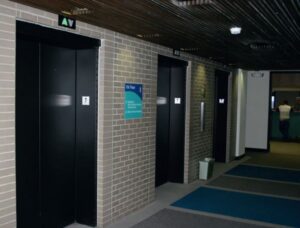
Generally, we cannot protect against such threats, but we can learn from them. It was an opportunity to rethink how we do things. In this case, it was an opportunity to reevaluate vulnerabilities and capitalize on successes. As an example, much was learned from the 9/11 attacks about how we can better use elevators for first responders and occupants. In some ways, it forced a new look at elevators as a key tool in emergency response and life safety in very tall buildings. Historically, firefighters, due to several tragic losses, have been reluctant to use elevators. The hazard analysis undertaken by the American Society of Mechanical Engineers (ASME) — with the participation of many stakeholders, including the Code Council, NFPA, the fire service, accessibility advocates and designers — resulted in a deep dive into these concerns. This resulted in a new concept adopted into the IBC termed fire service access elevators (FSAE) that offer another layer of protection and are required in buildings with floors more than 120 feet (37 m) from the lowest level of fire department access. Another huge accomplishment from this analysis was the concept of occupant evacuation elevators (OEE), which are recognized in the IBC as a design option. Note that ASME A17.1/CSA B44 (the elevator code in the U.S. and Canada) was also revised to integrate these concepts into the elevator code.
“The CTC believes [OEE] provides a viable solution to moving both able-bodied and disabled persons in buildings of all heights — not just the super-tall buildings — and will enjoy greater usage in buildings once the design community recognizes this technology,” Carl F. Baldassarra, P.E., FSFPE, chair of the CTC wrote in 2011. “The technology also provides a reliable method of providing full building evacuation of buildings of all heights in less than 60 minutes.”[ii]
Though a study of the events of 9/11 by the Code Council started several years prior, the 2009 edition of the IBC was the first edition to incorporate the changes resulting from the review of the NIST report. This was following several rounds of debate and voting by the Code Council’s membership. One of the overarching changes and a potential method for differentiating risk was the application of requirements by building height. An important observation and conclusion made while studying the World Trade Center report is, at a certain point, buildings become too tall to be supported effectively from the ground and require a more robust structural integrity and protection from fire. Therefore, features must be built into the building to make it more robust to provide the level of safety expected by occupants and society in general. The IBC basically divides the need for increased requirements into two categories to make this distinction:
- Typical high-rise building. Less than 420 feet (128 m) in building height
- Super high-rise building. Greater than or equal to 420 feet (128 m) in building height
The following table addresses some of the key changes as a result of the work of the Code Council committees and other proposals focused on the review of the World Trade Center investigation and recommendations.
[1] Risk Category III includes buildings that represent a substantial hazard to human life in the event of failure such as public assembly over 300 or any occupant load greater than 5,000. Risk Category IV includes buildings deemed essential such as fire and police stations and emergency shelters or communications facilities.
Some of the changes proposed by the CTC and TRB that did not make it into the IBC were incorporated in other standards. For example, the Code Council’s changes related to structural provisions were recommended for inclusion in structural standards such as ASCE’s Minimum Design Loads and Associated Criteria for Buildings and Other Structures (ASCE/SEI 7-16).
“The changes adopted into the last several cycles of the IBC as a result of the work of the TRB and the CTC should not be considered as a simple reaction to the events of 9/11, as others have criticized,” wrote Baldassarra in 2011. “Changes proposed by others, many of which were supported by the CTC, also were adopted — all with the goal of improving the safety of buildings.”ii
Where are we now?
Since being introduced in the 2009 edition of the IBC, most of the code requirements that resulted from the recommendations in the NIST report have remained largely intact, with only minor adjustments. Today, for example, fire service access elevators are fairly common in new high-rise buildings and, over time, emergency responders have become more comfortable with the use of elevators for firefighting purposes. The IBC now requires a minimum of two FSAE in buildings with floors greater than 120 feet (37 m) above the lowest level of fire department vehicle access.
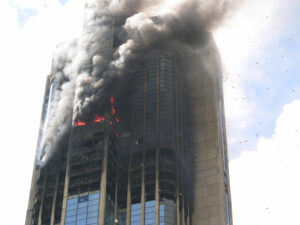
While FSAE are becoming common, OEEs are more slowly gaining momentum. The first building in the U.S. to contain OEEs was 181 Fremont in San Francisco, California. There are currently several OEEs in the works for New York City. The use of OEEs represents a huge human behavior shift as historically the public has been trained to avoid the use of elevators for evacuation during emergencies. Some adjustments have been made to the need for standby power to make the provisions more manageable and practical to implement. It is hoped that this concept will become more commonplace.
Increased bond strength of spray fire-resistant and hardened stairways continues to be required in high-rise buildings. In addition, the redundancy for water supply and sprinkler systems continue in place for these taller buildings.
The increased attention and recommended changes also led to the publication, in 2013, of the Society of Fire Protection Engineers’ (SFPE) engineering guide titled “Fire Safety for Very Tall Buildings” that SFPE developed in collaboration with the Code Council. Aimed at professionals who are responsible for tall building design, construction, renovation and alteration, the guide uses performance-based fire protection engineering concepts to address the complex fire safety performance of very tall buildings, covering critical topics such as hazard, risk and decision analysis; system reliability; and first-responder issues. These types of resources offer the opportunity for designers to think more deeply about an individual building’s needs and features.
The SFPE’s Tall Building Task Group recently completed an expanded second edition of the guide “Fire Safety for Very Tall Buildings” to be released later this year. This new version includes a more detailed look at façade fire safety due to tragic losses globally.
What’s next
The legacy of the changes that were implemented in response to the NIST recommendations from the 9/11 investigation doesn’t end there, however. The way the professional building and fire safety communities responded to the issues and concerns that were raised by the tragedy have implications that extend far beyond making buildings safer and more secure from terrorist attacks. The process of conducting technically substantiated cost-benefit analysis to address urgent emerging needs, can — and should — be applied to other societal concerns and objectives as well.
The events of 9/11 were very much a U.S. issue with a U.S.-focused response. However, the world is getting smaller and the hazards and societal concerns faced in the U.S. are becoming more common globally. In 2020, the COVID-19 pandemic drastically changed the world and how we live in the built environment. We continue to address ongoing concerns regarding the effects of climate change with many unknowns as to how to address them appropriately. Society expects more resilient, sustainable, and inclusive buildings and communities, and — at the same time — affordable housing.
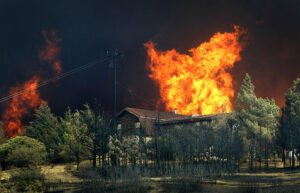
Some of these hazards are directly associated with fire safety such as wildland-urban interface fires and others create potential fire safety concerns such as the increased use of new technologies, including energy storage systems, photovoltaics, and combustible cladding and insulation. Generally, there are always new and innovative approaches and materials being generated and implemented. We will continually need to ask the question of how the regulation of the built environment addresses these issues into the future. We need a better understanding of the level of performance we expect and the risks that exist. Does everything need to be embodied in building regulations or should these concerns be left to market demand? How do we address existing buildings in this framework? In either case, we need to balance our objectives — such as energy efficiency and fire safety.
Fire safety and structural stability were the original guiding principles behind the building codes based upon tragic losses. But today, society grapples with a host of issues and concerns that are not related to fire safety. However, those issues can have a huge impact on the level of fire safety provided. After 9/11, much of the focus was on very tall buildings; however, these complex issues we are facing now extend to the overall built environment, including both new and existing buildings. Perhaps a more holistic risk and performance-based approach is necessary to better understand how we move into the future.
[i] Sivaraj Shyam-Sunder, Richard G. Gann, William L. Grosshandler, Hai S. Lew, Richard W. Bukowski, Fahim Sadek, Frank W. Gayle, John L. Gross, Therese P. McAllister, Jason D. Averill, James R. Lawson, Harold E. Nelson, Stephen A. Cauffman, Federal Building and Fire Safety Investigation of the World Trade Center Disaster: Final Report of the National Construction Safety Team on the Collapses of the World Trade Center Towers (NIST NCSTAR 1), December 1, 2005 https://www.nist.gov/publications/federal-building-and-fire-safety-investigation-world-trade-center-disaster-final-report
[ii] Baldassarra, C, The Role of ICC’s Code Technology Committee in World Trade Center-Related Code Changes, October 1, 2011 https://www.iccsafe.org/building-safety-journal/bsj-dives/the-role-of-iccs-code-technology-committee-in-world-trade-center-related-code-changes/
